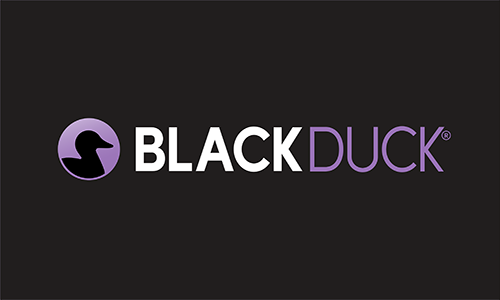Subscribe
What is NIST SP 800-218 (SSDF)?
The National Institute of Standards and Technology (NIST) Special Publication (SP) 800-218, also known as the Secure Software Development Framework (SSDF) is a critical guide for contemporary secure software development. The SSDF outlines a core set of fundamental, high-level, outcome-based practices designed to seamlessly integrate security throughout the entirety of the software development life cycle.
The SSDF is a compass for software producers, guiding them toward building more resilient and secure software from the ground up. It provides a common language and a structured approach to thinking about and implementing software security, moving beyond reactive patching to proactive development. The framework is intentionally designed to be adaptable, allowing organizations to tailor its practices to their specific needs, existing development methodologies, and the risks they face.
At its core, the SSDF champions the idea that security is not a phase or an add-on, but an intrinsic part of the development culture and process. It encourages a holistic view, where every stage, from initial design to postrelease maintenance, incorporates security considerations.
The SSDF is organized into four high-level practice groups: Prepare the Organization (PO), Protect the Software (PS), Produce Well-Secured Software (PW), and Respond to Vulnerabilities (RV). Each of these groups contains specific tasks and desired outcomes that contribute to a more secure software product. For instance, within the Produce Well-Secured Software group, there are explicit expectations around secure coding practices, including code reviews and the use of static analysis tools, as well as automated testing of executable code using dynamic analysis or fuzz testing.
The SSDF directly addresses the growing concerns around software supply chain security by emphasizing secure management of third-party components. This includes practices for acquiring and maintaining well-secured external software such as understanding its provenance through mechanisms like a Software Bills of Materials and continuously monitoring for vulnerabilities.
Why was the SSDF developed?
The development and promotion of the SSDF stemmed from a pressing need to elevate the security posture of software across industries. The SSDF consolidates widely recognized and proven industry best practices into a single, structured framework. It also provides a common vocabulary and a universally accepted reference point to allow different organizations, and even different teams within the same organization, to discuss, implement, and assess their secure development processes.
While the SSDF itself is not a regulation, its principles and practices are increasingly being recognized and referenced by regulatory bodies. For example, the U.S. Food and Drug Administration’s cybersecurity requirements for medical devices explicitly recommend the adoption of a secure product development framework, with the SSDF being a prime example of such a framework. Similarly, the EU’s Cyber Resilience Act (CRA), with its strong emphasis on “security by design,” aligns closely with the proactive security integration advocated by the SSDF.
One of the SSDF’s core strengths is its design for flexibility. It’s not prescriptive about how to implement specific tools or methodologies; instead, it focuses on desired outcomes. This allows it to be integrated into a wide array of software development life cycle models, whether an organization uses traditional waterfall or agile methodologies, or has a DevOps culture. Organizations can tailor the SSDF’s practices based on their unique risk profile, available resources, specific business context, and the nature of the software they are developing.
As seen in regulations like the CRA and FDA requirements, there’s a definitive trend to shift the responsibility for software security onto producers, rather than consumers. The SSDF equips software producers with the guidance needed to meet this increased accountability, fostering a development culture that prioritizes security throughout the product life cycle.
Who is impacted by the SSDF?
While the SSDF is a guidance document rather than a legally binding regulation for most, its influence and impact are far-reaching. The primary audience and those most directly impacted are software producers: any organization, team, or individual involved in the design, development, and maintenance of software, whether for commercial sale, internal use, or as open source projects. Those producing software for the U.S. government are expected to adhere to the SSDF. For example, the SSDF is referenced in Executive Order 14028 and tied to Office of Management and Budget (OMB) Memorandum M-22-18, which mandates agencies to ensure that software producers attest to secure development practices.
Any organization that aims to enhance its software security posture can benefit from the SSDF. It provides a structured framework for discussing, implementing, and assessing secure development processes, regardless of geographic location or industry sector.
Entities falling under regulatory regimes that advocate for, or mandate, secure development practices will find the SSDF invaluable. This includes manufacturers of medical devices subject to FDA Section 524B, and producers of “products with digital elements” for the EU market under the CRA. Adopting the SSDF can be a pathway to demonstrating compliance with the secure development aspects of such regulations.
The principles of the SSDF, particularly those concerning the security of third-party components, have implications for the entire software ecosystem. Organizations that consume software components will benefit when their suppliers adhere to SSDF practices, leading to a more secure overall supply chain. Conversely, producers using the SSDF will be inclined to scrutinize their suppliers more carefully.
Ultimately, the SSDF impacts anyone with a stake in the security and integrity of software. Its adoption fosters a more security-conscious culture, leading to safer products and a more resilient digital infrastructure for everyone.
The SSDF, currently at version 1.1, is not a regulation with a specific “go-live” or enforcement date like the EU CRA. Instead, the SSDF represents current, ongoing best practices for secure software development. Its applicability is immediate for any organization wishing to improve its software security.
The SSDF becomes particularly relevant when an organization is preparing to comply with other regulations that either directly recommend it or mandate similar secure development life cycle practices. For instance, medical device manufacturers preparing premarket submissions for the FDA under Section 524B must demonstrate secure design and development, with FDA guidance recommending a secure product development framework like NIST’s. As the CRA’s applicability date approaches, organizations will find the SSDF a valuable tool for meeting its “secure by design” requirements.
How to Implement the SSDF
Implementing the NIST SSDF is a strategic undertaking that involves integrating its practices throughout an organization’s software development life cycle. While the SSDF provides the what and why, the how often involves a combination of process changes, personnel training, and the adoption of enabling technologies. Software composition analysis (SCA) has emerged as a critical technology in this domain, and solutions like Black Duck® SCA are specifically designed to help organizations meet many of the SSDF’s objectives, particularly concerning the security of third-party and open source components.
By leveraging a comprehensive SCA solution like Black Duck SCA, organizations can automate and streamline many of the tasks required by the SSDF, particularly those related to identifying, managing, and securing the vast landscape of third-party and open source components. This not only helps in achieving SSDF alignment but also strengthens overall software supply chain security.
To gain deeper insights into how SCA can help you navigate not only the SSDF but also other pivotal regulations, such as the FDA Cybersecurity Requirements for Medical Devices and the EU CRA, download our comprehensive guide, “Key Regulations Shaping Software Supply Chain Security and the Role of SCA.”
Continue Reading
Three steps to ensuring the reliability and security of your C++ projects
Jun 03, 2025 | 3 min read
How to secure AI-generated code with DevSecOps best practices
May 08, 2025 | 3 min read
Security automation and integration can smooth AppSec friction
Jan 23, 2025 | 6 min read
Overcome AST noise to find and fix software vulnerabilities
Jan 06, 2025 | 6 min read
Artificial intelligence widens the gap between security and development
Dec 01, 2024 | 7 min read








